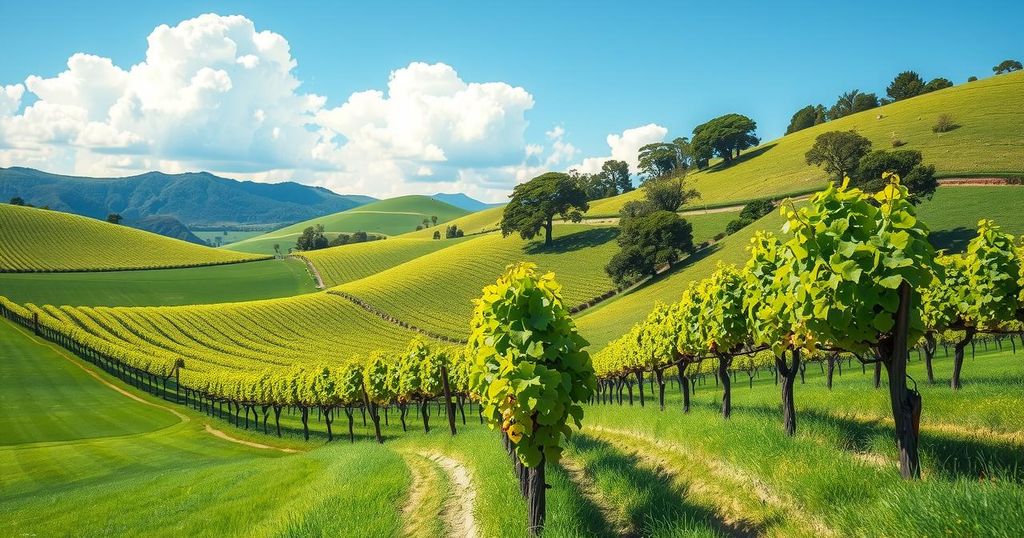Bolivia’s Tarija province features breathtaking landscapes and high-altitude wines, honoring Indigenous traditions like “Pachamama”. Despite its geographical challenges, the region produces exceptional wines and the distinctive liquor Singani. Boasting a rich culinary scene, Tarija mirrors Tuscany’s charm, making it a hidden gem worth exploring.
In Bolivia’s wine country, visitors experience a blend of cultural magic and exquisite wines. Guided by Orlando Condori, we honor “Pachamama” by pouring our drinks onto the ground as a tribute to Mother Earth. At an altitude of 3,500 meters, the thin air leaves us lightheaded, underscoring the unique challenges of winemaking in this high land.
The Tarija province boasts an impressive diversity in topography and wildlife, including forests and flamingos. This region, revered for its hidden wineries, mirrors Tuscany’s charm, offering breathtaking vistas of the Cordillera de Sama and an assortment of growing wineries. A top producer of high-altitude wine, Tarija produces high-quality varieties despite its geographical uniqueness.
As we explore the vineyards, we learn that altitude significantly influences wine quality—Jurgen Kohlberg’s Bodega Tayna specializes in exceptional pinot noir. Harvesting in the serene silence of night, he creates merely 2,000 bottles annually, each embodying a touch of enchantment.
Campos de Solana, another prominent winery, dazzles with its impressive facade and grounds, despite being situated in an atypical viticulture zone. Luis Pablo Granier explains that Tarija’s wines thrive thanks to its altitude, despite the hot climate that would usually hinder wine production.
Bolivia is notable for its distinctive liquor known as Singani, distilled from Muscat of Alexandria grapes. Filmmaker Steven Soderbergh, a prolific ambassador for Singani, describes it as a delicate spirit with floral qualities that challenges conventional perceptions of Bolivian culture. Its origins reach back to Spain’s colonial influence when it was developed as a preservation method for spoiled wine.
Dining at Kohlberg Winery evokes a true Bolivian experience, culminating with inventive dishes prepared by Chef Pablo Cassab that respect ecological footings while showcasing the country’s culinary evolution. Outdoor lunches beneath mulberry trees accentuate the gastronomy that is gaining recognition alongside Tarija’s burgeoning wine culture.
Amidst the leisurely exploration of Tarija, stories of land and culture emerge, reminding one of the mysteries held within Bolivia’s landscapes. Whether it is the moonlit beauty of the Uyuni salt flat or the magical essence of wine production at high altitudes, Tarija presents itself as a land of both earthly and cosmic wonders.
In conclusion, Bolivia’s Tarija province offers an extraordinary mix of ancient spirituality and modern winemaking against a stunning backdrop. The region’s high altitude facilitates the production of remarkable wines, while its culture is rich in history and sustainability. Patrons can enjoy exquisite dining experiences and discover the lesser-known yet vibrant gastronomic scene. Ultimately, this elegant corner of Bolivia serves as a testament to the surprising cultural and natural riches that thrive in unexpected places.
Original Source: www.spokesman.com




